Best Mini Synths 2024
We pick the best compact synthesisers on the market, including digital and analogue options from Korg, Moog and more.
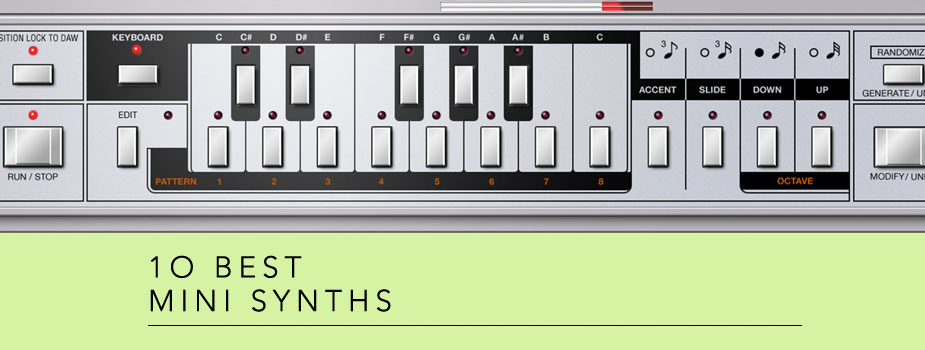
Small synths don’t necessarily have to be basic. Some might look like toys, but even the smallest box can pack a mighty punch. We’ve rounded up ten of our favourite miniature options, from budget Korg analogue through to compact-but-mighty instruments from the likes of Moog and Teenage Engineering.
In this category you’ll find everything from simple analogue instruments to complex semi-modular designs, via weirdo digital hybrids and unassuming modules that punch way above their weight. In no particular order, here are our favourites…
Contents
- What to look for
- The best mini synths
- In summary
What to look for
Why choose a small synth?
Back in the day, size mattered. As recently as the early 2000s, it was widely accepted in electronic music circles that bigger was better: the larger the synth, the more it could do. There’s a certain logic to the idea that you can fit more features into a bigger instrument, but things have changed. In much the same way as smartphones or laptops continually get more compact and powerful, the development of new circuit technology, means you can now fit huge synth power into a tiny format.
Just because it’s small doesn’t mean it’s any less powerful, but there are other benefits. Many of the synths on our list are truly portable – some even running on batteries – meaning you can make music on the go or transport them easily for live performances or collaborating with friends.
Perhaps the biggest benefit of all is the most obvious: smaller synths take up less space, meaning that you can fit them into even the most cramped studio.
Is there a downside?
There is one potential issue which is worth bearing in mind when looking at smaller synths. There’s an unavoidable compromise in terms of hands-on control when smaller synths are designed: you simply can’t fit the same number of knobs, switches and faders into a smaller space without cramming them closer together or making them smaller.
The best synth designers work around those constraints, ensuring that controls remain ergonomic and expressive despite the reduced front panel space. Synths like the Make Noise 0-Coast and Moog Mother-32 are as good to play as any large-format synth, while the Arturia MicroFreak puts a clever spin on compact keyboards with its unique touch-sensitive design.
Aren’t small synths just toys?
In recent years, brand such as Korg and Teenage Engineering have introduced synths so compact and affordable that they blur the lines between real musical instruments and toys. Despite their size and appearance, you shouldn’t underestimate instruments like the Korg Volca series. Battery operation and built-in speakers might give the impression that these aren’t professional musical tools, but their sound disproves that misconception.
The smallest synths of all on our list are the Teenage Engineering Pocket Operators, which lean in heaviest of all to the ‘toy’ concept with their video game-inspired concepts and tongue-in-cheek graphics. But as with all Teenage Engineering products, the fun is backed up by truly excellent sound quality and genuine usability. The Pocket Operators prove best of all that synths can be small, cheap and fun but still sound serious.
The best mini synths
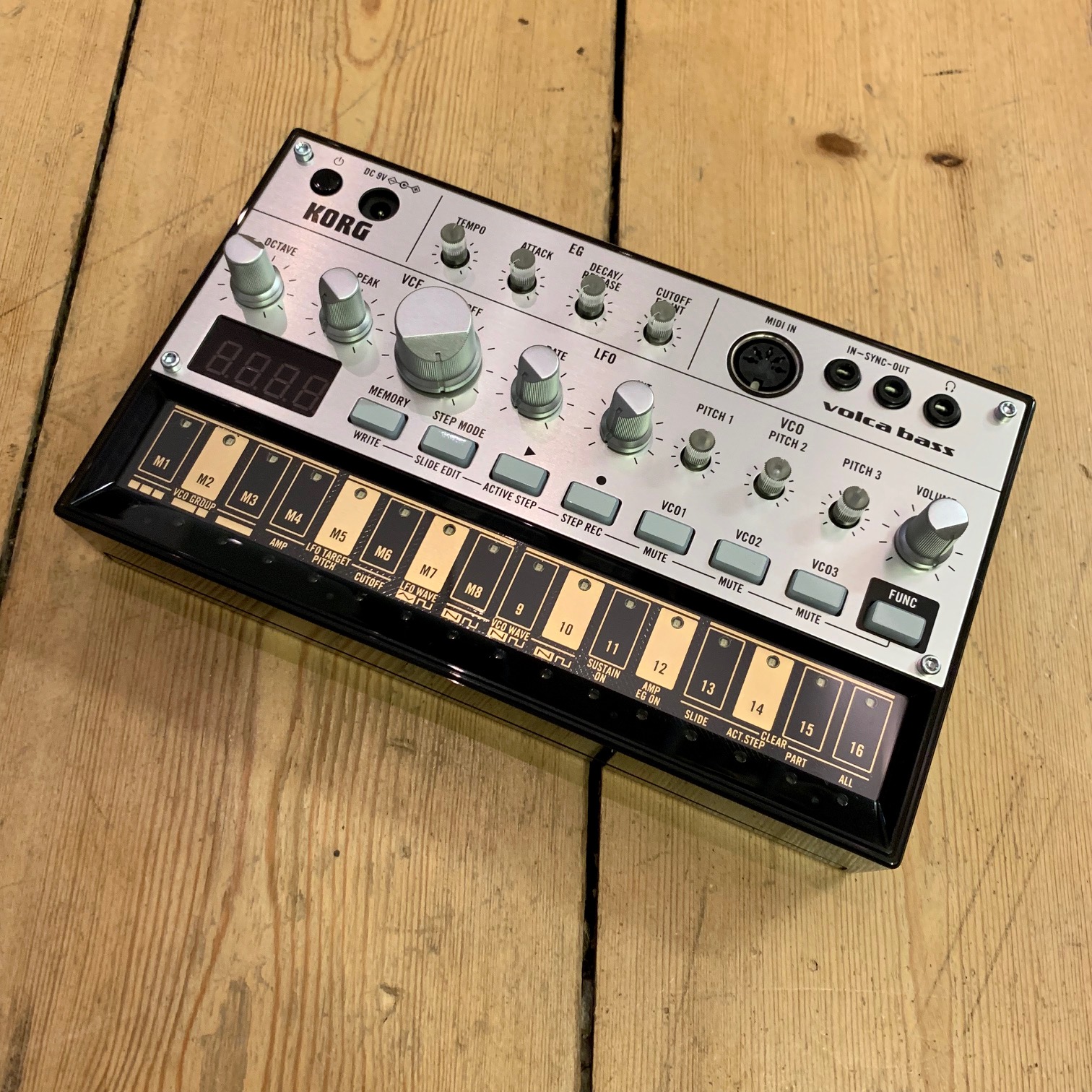
If we had to pick one product range which has had the biggest impact on the music tech scene over the last decade, the Korg Volca series would be a strong contender. Sure, there have been compact synths on the market for years – maybe even as far back as the 1971 EMS Synthi, depending on your definition of ‘compact’ – but the Japanese brand’s affordable range of mini instruments changed the game when they were released in 2013.
The formula was fiendishly simple: various flavours of proper synth (and drum) circuitry in the same cheap-and-cheerful form factor, usually analogue, and always with a built-in sequencer. The Volcas proved that it was possible to pack big functionality into small boxes, and did so at very affordable price points. Before the Volca series, it was easy to dismiss small and cheap synths as toys, but those preconceptions have surely shifted in large part thanks to the Volca range.
The series has expanded substantially since the initial release of the Volca Bass (an analogue acid box at heart, but capable of much more) and Keys (polyphonic analogue). You’ll find everything from samplers to drum machines, but for our purposes here the focus is squarely on synths, so we’d plump for the Volca Bass. A modern classic.
More info/Buy| Pros | Cons |
|---|---|
| Serious sound in a tiny box | Plasticky feel |
| Affordable analogue options |
| Tech specs | |
|---|---|
| Synthesis type | Various |
| Voices | Various |
| Features | Compact synths with built-in sequencers |
| Dimensions | 193 x 115 x 46 mm |
| Weight | 370 g |
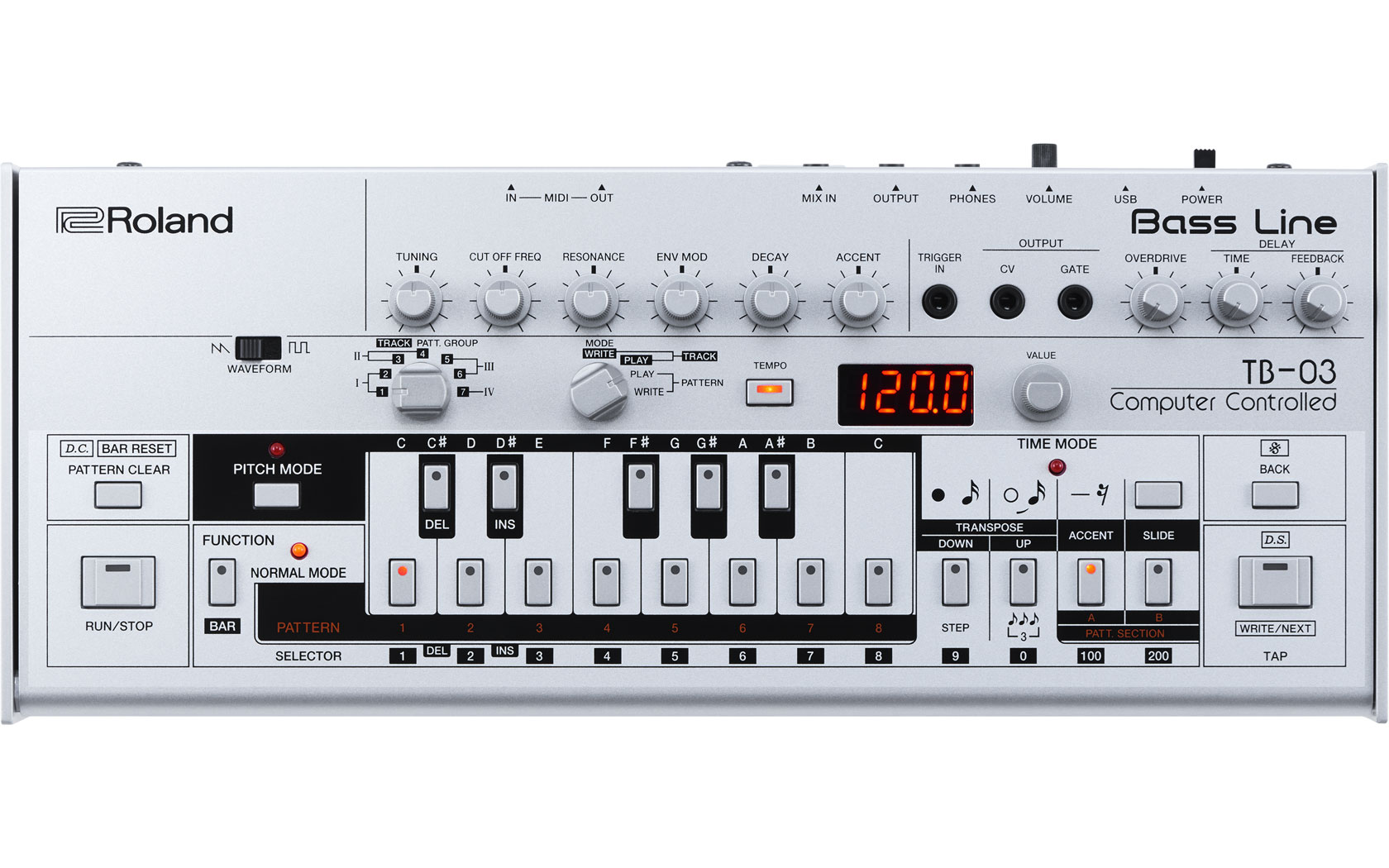
The original Roland TB-303 might be considered the definitive mini synth. The story has become part of electronic music folklore… Launched in 1981 as a bass guitar-style accompaniment aimed at organ players and guitarists, the 303 was a painfully limited synth that failed to sound anything like the instrument it was supposed to imitate. Nevertheless, it grabbed the attention of Chicago producers who realised in the mid 80s that this cheap, unloved box could be used and abused to create the distinctive sound of what became known as acid house.
Roland finally acknowledged the public demand for a modern 303 with the release of the Aira TB-3 in 2014, but in our opinion the Boutique TB-03 takes things to another level. It’s a digital version of the original analogue 303, based around Roland’s ACB (Analogue Circuit Behaviour) technology.
You probably already know what to expect here: simple but devastatingly effective synth sounds, ideal for house and techno. It might not be the most versatile instrument on the market, but it’s one of the best choices for classic acid sounds.
More info/Buy| Pros | Cons |
|---|---|
| Classic acid sound | Purists will prefer ‘real’ analogue |
| Modern updates |
| Tech specs | |
|---|---|
| Synthesis type | Digital |
| Voices | Monophonic |
| Features | Built-in sequencer; overdrive and delay effects |
| Dimensions | 130 x 308 x 52 mm |
| Weight | 0.94 kg |
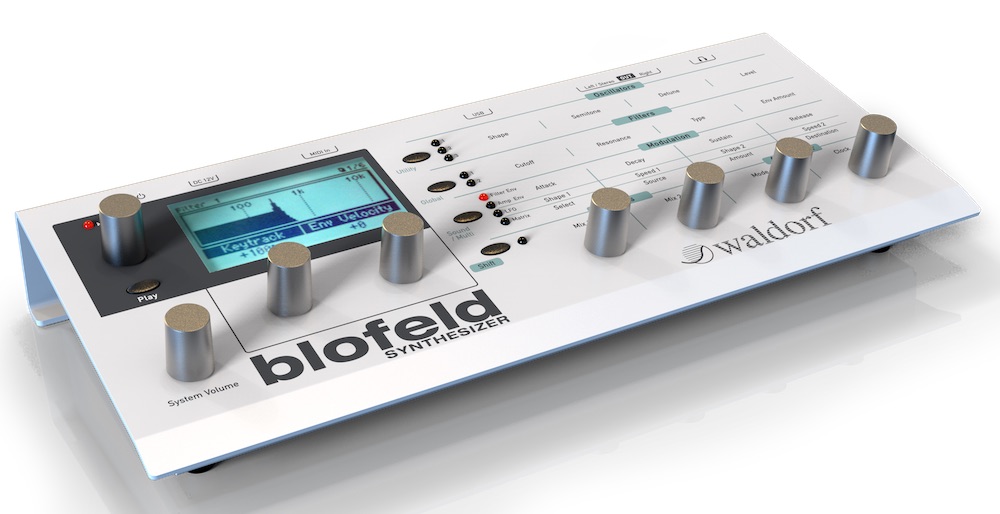
The Waldorf brand might not be a household name like Roland or Moog, but it deserves the same kind of respect. As one of the key players in the 80s market, Waldorf drew on the work of digital synth innovator Wolfgang Palm to push the boundaries of wavetable synthesis. The company’s earlier synths became synonymous with bold, precise bass and complex, shifting pads.
The polyphonic Blofeld module was launched in 2007, as something of a comeback following a few years of financial instability. That makes it one of the older synths on our list but one that easily holds its own against younger models despite long since passing its tenth birthday. Putting aside the history lesson for a moment, the Blofeld is one of those rare beasts: a synth that can truly do a bit of everything, from stark, clinical electro bass to rich, organic leads via high-tech, shifting pads. There’s a very good reason it’s become such an enduring modern classic.
It’s also worth noting that Waldorf are specialists in compact but sonically impressive synths, so the rest of their product range deserves some attention too. If you’re short on space, their Pulse 2 and Streichfett modules are strongly recommended.
More info/Buy| Pros | Cons |
|---|---|
| A genuine all-rounder | Not the most intuitive user interface |
| Huge multi-voice and multi-timbral capabilities |
| Tech specs | |
|---|---|
| Synthesis type | Wavetable/virtual analogue digital |
| Voices | 25-voice polyphonic |
| Features | 16-part multitimbral |
| Dimensions | 304 x 132 x 54 mm |
| Weight | 1.3 kg |
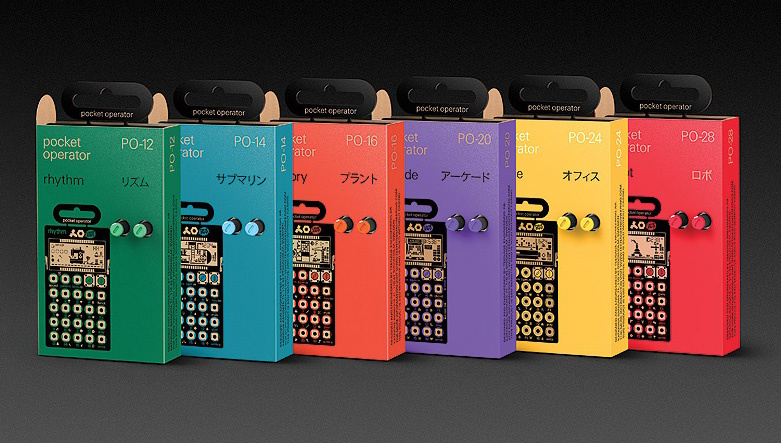
If ever a synth brand could be relied upon to tear up the rulebook and do things their own way, it’s Teenage Engineering. The Stockholm startup bucked every trend imaginable when it launched with the expensive but stunningly executed OP-1 mini keyboard in 2010. The Pocket Operator series – named as a sneaky tribute to Kraftwerk – was originally launched as a collaboration with fellow Swedish brand Cheap Monday, best known for their jeans. If that seems unlikely for most brands, it makes a perfect kind of sense for Teenage Engineering.
What you get with each Pocket Operator is a simple calculator-style sound module which looks a bit rough-and-ready in its basic case, exposed microswitches and all, but hides an excellent digital instrument with a built-in sequencer. Each one has its own unique approach, with quirky graphics representing the different capabilities of each unit (office equipment for the PO-24 percussion synth, a boxing match for the PO-33 sampler, and so on).
There are plenty of options in the range, including drum machines and samplers, but in terms of pure synth capability we’d probably go for the 8-bit PO-28 Robot or the bassline-focused PO-14 Sub.
More info/Buy| Pros | Cons |
|---|---|
| Huge bang for your buck | Bare bones design |
| Lots of character |
| Tech specs | |
|---|---|
| Synthesis type | Digital/samples |
| Voices | Various |
| Features | Built-in sequencers; battery operated |
| Dimensions | 178 x 89 x 5 mm |
| Weight | 70 g |
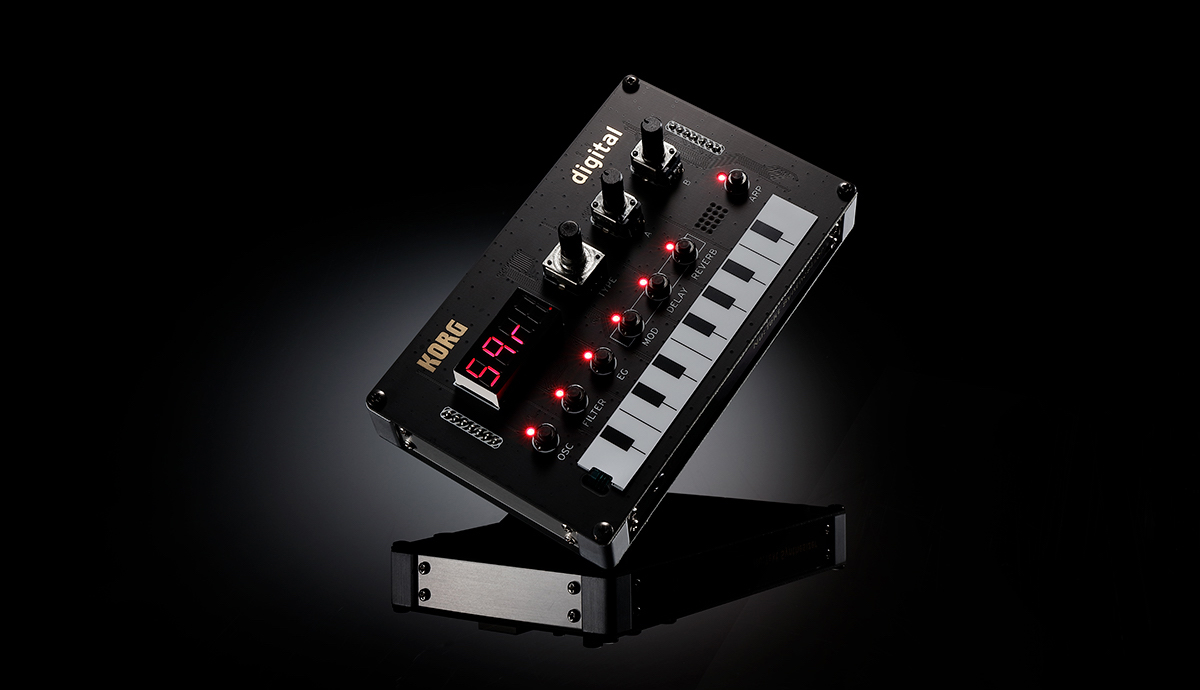
The second Korg entry on our list is an entirely different affair, even smaller than the Volca modules but with an unusual approach that sets it apart from just about anything else on the market.
Announced at Berlin’s wild and wonderful Superbooth show, the NTS-1 is a tiny little device based on the MULTI engine found in Korg’s much-loved Prologue and Minilogue XD synths. It requires a little bit of simple construction to get started, then it can be customised by uploading code to the unit’s memory. Crucially, it uses the same open development API (application programming interface), which means you can design your own custom oscillators, filters and stereo effects, turning it into a unique mini synth.
Having got our hands on an early demo version, we can see the sonic potential here. It won’t be for everyone, but if you’re technically minded and open to learning and experimenting while you make music, the NTS-1 has a unique appeal.
More info/Buy| Pros | Cons |
|---|---|
| Compact but powerful | Probably best suited to the technically minded |
| Deeply customisable |
| Tech specs | |
|---|---|
| Synthesis type | Digital |
| Voices | Monophonic |
| Features | Customisable; built-in effects |
| Dimensions | 129 x 78 x 39 mm |
| Weight | 124 g |
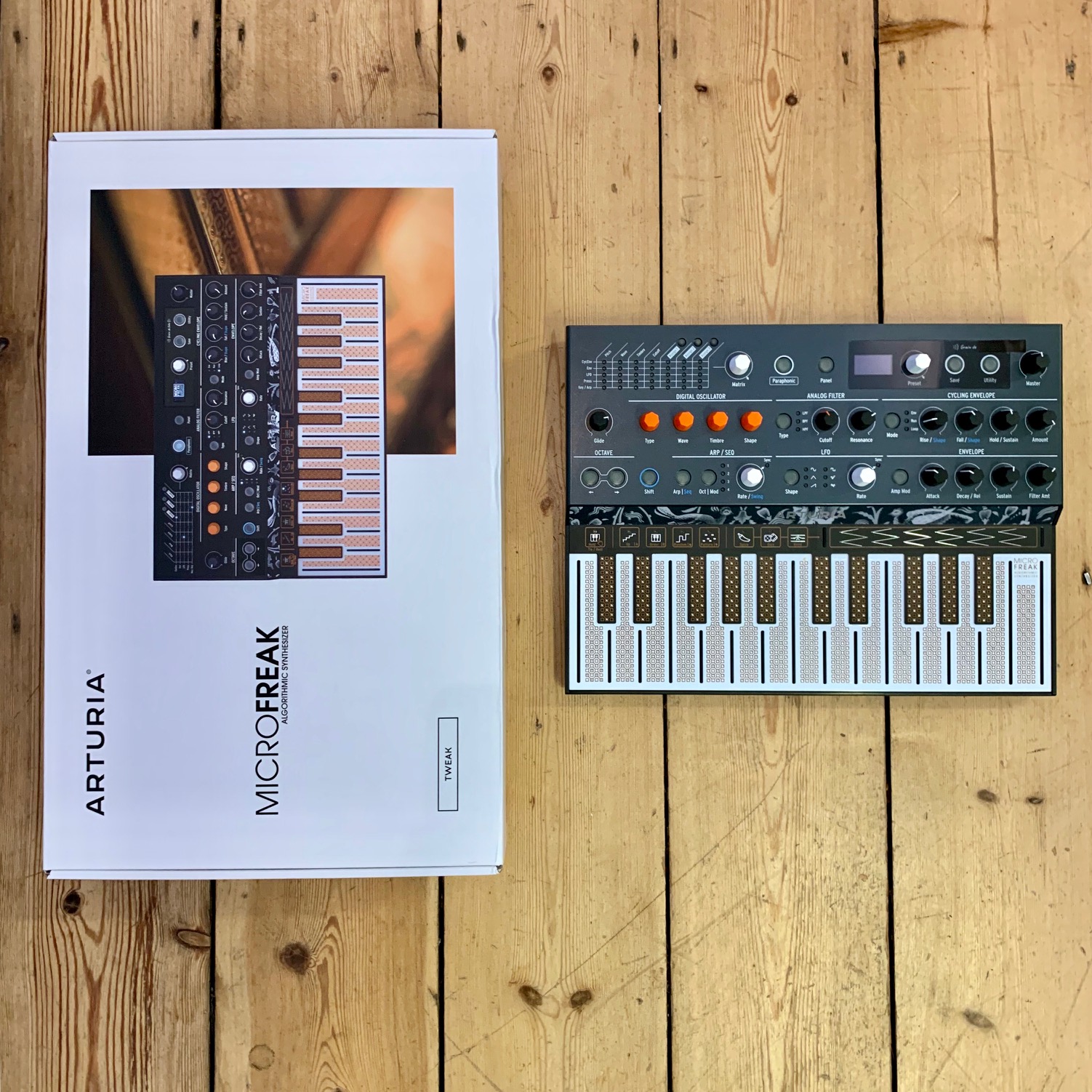
Arturia’s have become hardware synth specialists in recent years, with their excellent MicroBrute representing the most obvious candidate for inclusion on our list; it’s a tiny keyboard that packs a seriously weighty punch. But we’re turning instead to its younger and distinctly weirder sibling, the MicroFreak, which breaks with tradition to combine left-field synthesis approaches with a creatively inspiring sequencer and expressive touch-strip keyboard.
The key selling point is its digital oscillator section, based heavily on the exceptional Plaits module from Mutable Instruments. In its various different modes, the oscillator can create a wild range of sounds. With so much versatility in that oscillator section, the sonic possibilities are huge before you’ve even touched on the filters and other slightly more conventional aspects of the synth architecture. The MicroFreak is a total oddball, and we love it.
Check out our full MicroFreak review here.
More info/Buy| Pros | Cons |
|---|---|
| A refreshingly original take on synthesis | A bit too weird for some |
| Interesting performance options from touch keyboard |
| Tech specs | |
|---|---|
| Synthesis type | Hybrid |
| Voices | Paraphonic |
| Features | Digital oscillator; touch keyboard |
| Dimensions | 311 x 233 x 55 mm |
| Weight | 1 kg |
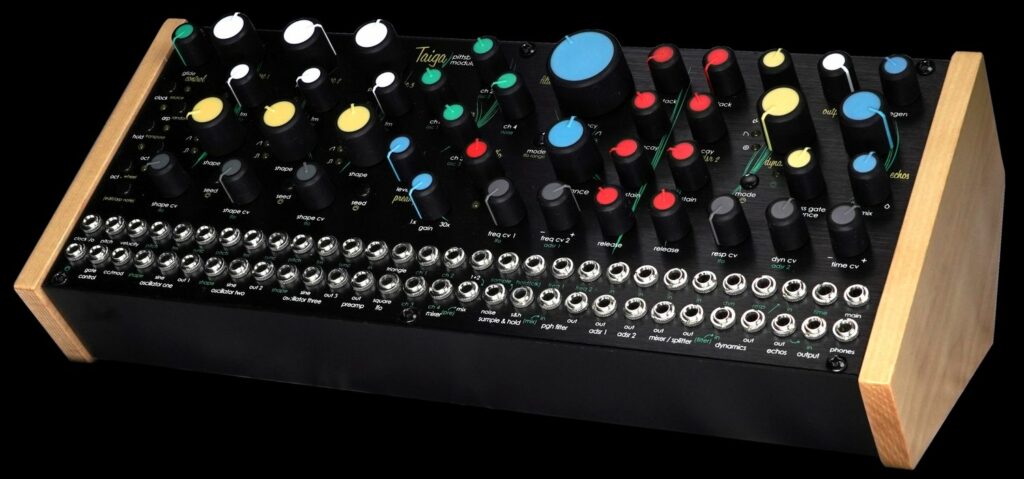
Pittsburgh is a city with a growing reputation for electronic music but the Steel City also has a strong representative in the synth world thanks to its eponymous modular brand. The Taiga might be considered Pittsburgh Modular’s effort to combine the iconic worlds of East Coast (Moog-style) and West Coast (Buchla-inspired) modular synthesis, cramming a huge amount of creative synth power into a small package.
The Taiga is a paraphonic semi-modular design, and the first thing that stands out is its broad array of patch points. While the synth doesn’t require any patch cables to get started, it’s very much aimed at those who are keen to get creative with patching and discover their own unique sounds. The three ‘huge’ oscillators, ‘smooth’ state-variable, multi-mode Pittsburgh filter and Buchla-inspired ‘dynamics controller’ are familiar from other Pittsburgh Modular designs, including the brand’s collabs with Cre8audio for the East Beast and West Pest. Combined here with complex wave shaping and wave folding options, analogue echo and fully patchable design, it’s a real playground of analogue synthesis.
We think the Taiga offers huge value for money if you’re keen to explore modular synthesis with a single box. Of course, the synth is also compatible with Eurorack modules and other patchable hardware. A keyboard, touch controller or sequencer might be an obvious starting point, but you can also add oscillators, filters and more, expanding gradually to create a much more complex modular setup.
More info/Buy| Pros | Cons |
|---|---|
| Proper modular synth options in one box | An interest in patching is a must to get the most out of it |
| Deep and impressive sound |
| Tech specs | |
|---|---|
| Synthesis type | Analogue |
| Voices | Three-voice paraphonic |
| Features | Semi-modular |
| Dimensions | 326 x 135 x 112 mm |
| Weight | 1.8 kg |
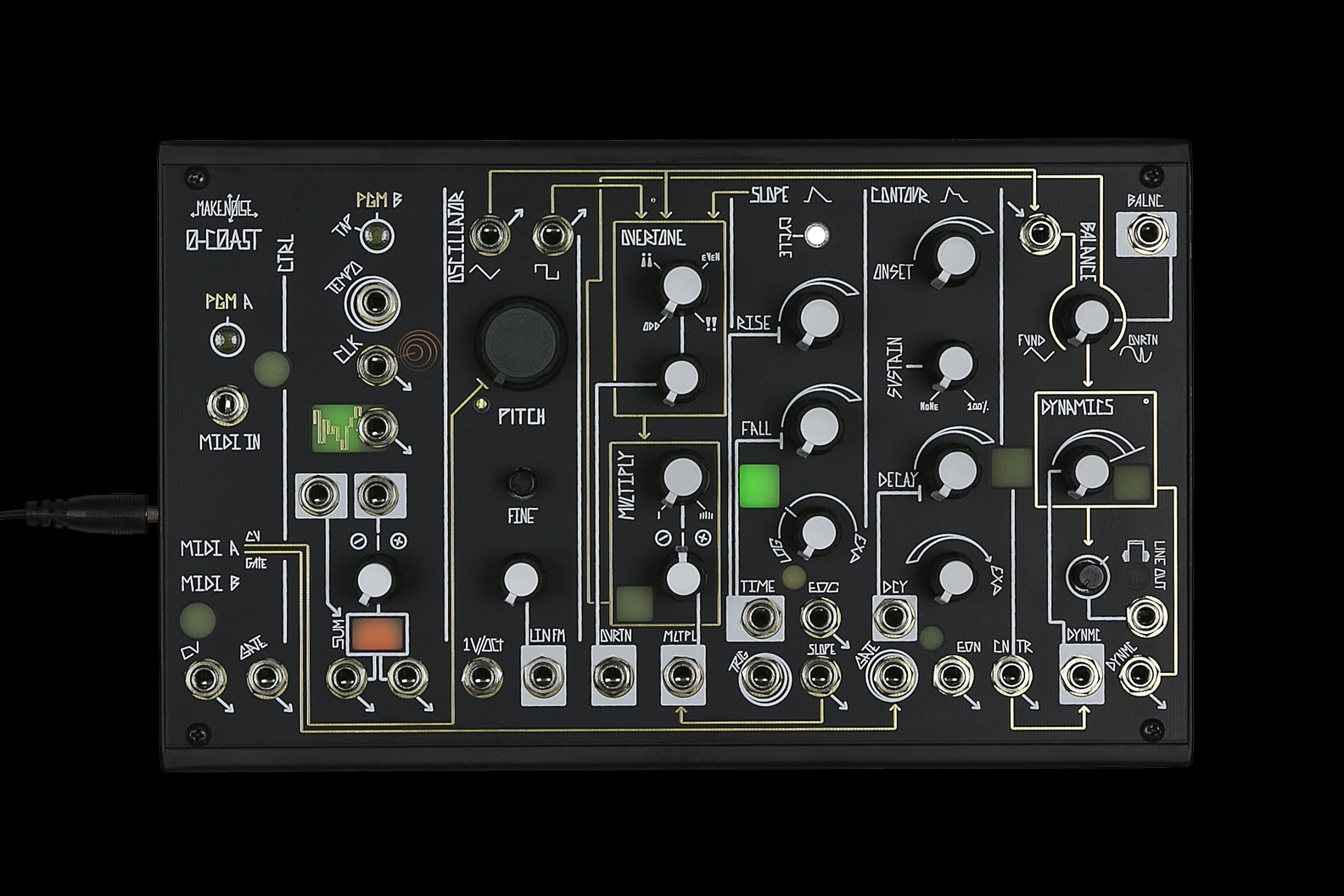
Historically, analogue synths fell into two main camps: the East coast approach led by Bob Moog, with a focus on subtractive synthesis, and the West coast method of Don Buchla, based around more esoteric forms of synthesis like frequency modulation and additive, with generally a more experimental and slightly wacky attitude to sound.
Like many of the new breed of Eurorack specialists, North Carolina brand Make Noise don’t necessarily adhere to either of the traditional approaches, instead forging their own path with unique and hugely popular modules like the René, their brilliant Cartesian sequencer.
Their semi-modular offering is as much a mission statement as it is an instrument. The 0-Coast (“no coast”) takes a unique approach, with hints of East coast and West coast methodology but definitely not falling quite into either category. It’s an approach that demands experimentation – maybe not the fastest way to dial in bog standard synth sounds, but offering something quite different once you fall under its spell. You’ll probably need to study the manual to understand how everything works, but the excellent documentation is a useful resource in its own right, helping you to learn how to draw the most out of this hugely creative little box.
More info/Buy| Pros | Cons |
|---|---|
| The best introduction to Make Noise’s brilliant instruments | Demands experimentation |
| Unique “no coast” philosophy |
| Tech specs | |
|---|---|
| Synthesis type | Analogue |
| Voices | Monophonic |
| Features | Semi-modular; experimental approach |
| Dimensions | 228 x 139 x 19 mm |
| Weight | 770 g |
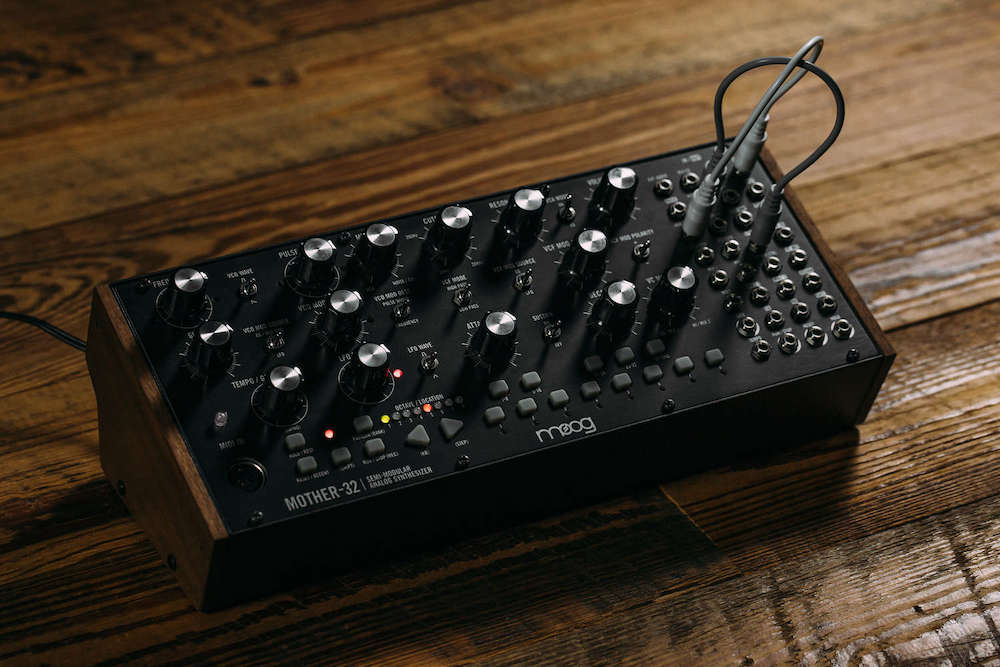
If we’ve leaned heavily on semi-modular designs for this list, that’s simply because the market for them has really exploded over the last few years, offering some excellent contrasting approaches to the same basic idea of a small, good value synth with the possibility to patch and get creative.
One brand who surely can’t be accused of jumping on the bandwagon is the legendary Moog, who can trace their involvement in modular synths all the way back to the 1960s. The company has produced everything from compact monosynths to huge polyphonic beasts over the years, but they’ve hit a sweet spot recently with forward-thinking Eurorack-friendly designs like the Matriarch, DFAM and the Mother-32 we’ve chosen here, a monophonic, single-oscillator design based around the classic Moog VCO and VCF.
Aside from that legendary Moog sound, the feature that really sets the Mother-32 apart from the other semi-modular options on our list is its built-in step sequencer. Although it’s by no means a huge challenge to control any semi-modular instrument with a separate sequencer, the integration here does provide an extra level of slickness. It’s a fantastically creative tool, and proof if it were needed that good things really do come in small packages.
More info/Buy| Pros | Cons |
|---|---|
| Classic Moog sound in a Eurorack-compatible semi-modular format | Not cheap |
| Excellent built-in step sequencer |
| Tech specs | |
|---|---|
| Synthesis type | Analogue |
| Voices | Monophonic |
| Features | Semi-modular; step sequencer |
| Dimensions | 319 x 107 x 132 mm |
| Weight | 1.6 kg |
In summary
Our round-up of mini synths is one of our most eclectic 10 Best features. There’s something to suit all needs here, whether you’re looking to purchase your first synth or expand an existing studio setup.
At the cheaper end of the scale, Korg Volcas and Teenage Engineering Pocket Operators offer incredible value for money. Korg’s innovative approach to grooveboxes focuses heavily around analogue circuits, giving you options which sound much more expensive than they are. The Pocket Operators are all digital but follow a similar design ethos in terms of offering high-quality sound with built-in sequencers so that they work well either as standalone instruments or as part of a bigger setup alongside other hardware or software.
At the other extreme, synths like the Pittsburgh Modular Taiga and Moog Mother-32 are seriously powerful semi-modular powerhouses that just happen to be designed efficiently. While they might not have the visual impact or stage presence of a giant keyboard or full-size modular rig, they can easily match bigger synths in terms of sound and versatility.
Whether you’re on a budget, trying to work around limited studio space or looking for something portable, mini synths have something to offer everyone.